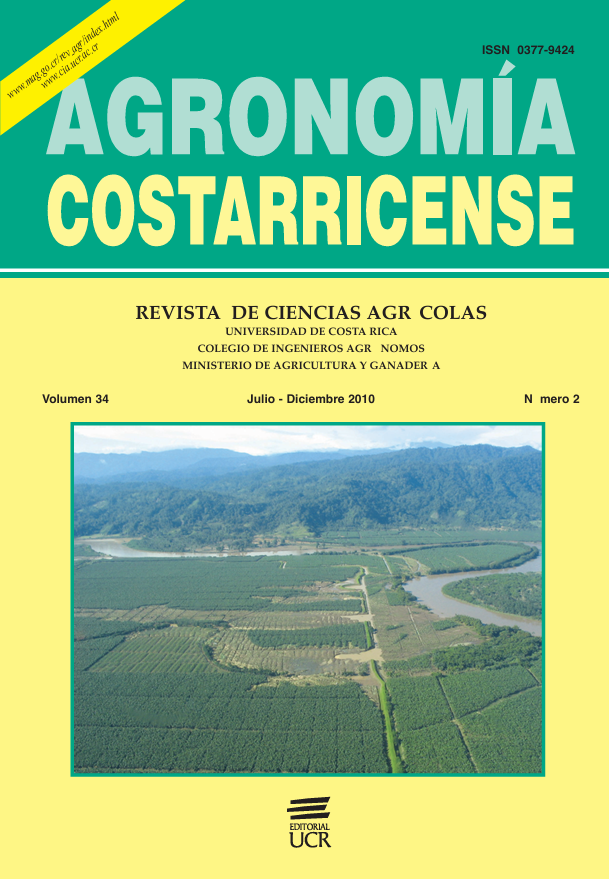Abstract
The effect of the color (blue, green and red) and of the density (low and high) of polyethylene bunch covers was evaluated in 4 experiments on banana (Musa AAA) and 1 on plantain (Musa AAB) at commercial farms in the Caribbean region of Costa Rica. The bunch weight and the interval of days from bagging to harvest did not differ between colors (p > 0.4116) nor between densities (p > 0.2583) of the bunch covers. The bunch appearance showed diffe rences among colors (p < 0.0067) and among polyethylene densities (p < 0.0211) only in the plantain experiment, where blue and red did not vary on the average, but both did from the green one. In this experiment, the greater percentage of bunches without spots or injuries was obtained with the high density cover. The thickness of the central fruit of the outer row in the second, fourth and sixth hand was similar between colors (p > 0.0669) and densities (p > 0.2370) of the covers. The length of the central fruit of those hands did not present differences between colors (p > 0.1446) and only varied with cover density in the second and fourth hand of experiment 3 (p < 0.0501), whose length value was greater with the high density cover. The fruit peel color and firmness, the fruit firmness and percentage of total solids (brix) were similar between the colors (p > 0.0899) and between the densities (p > 0.0606) of the covers. The acidity percentage showed differences (p < 0.0001) between colors only in experiment 1. The results indicate that under the agro-climatic and management conditions of the Caribbean region of Costa Rican, there was in general no effect of the color nor of the polyethylene density evaluated on banana and plantain bunches and fruits.

This work is licensed under a Creative Commons Attribution-NonCommercial-NoDerivatives 4.0 International License.
Copyright (c) 2016 Agronomía Costarricense

